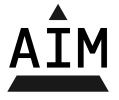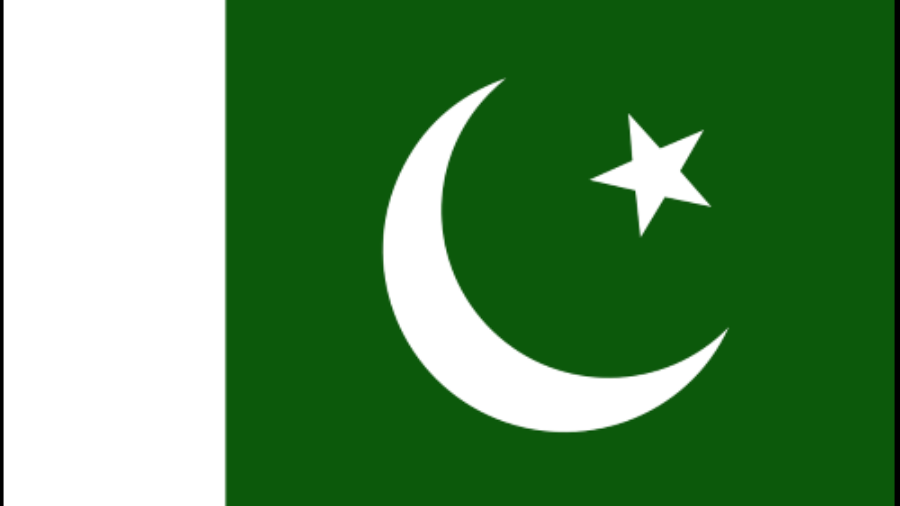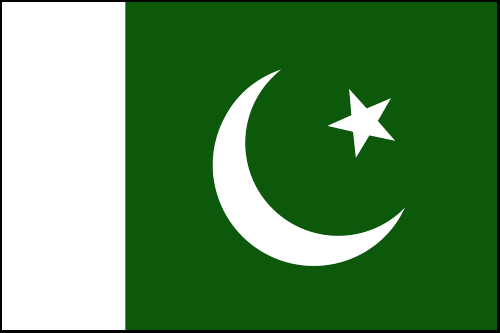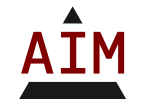
The Indian Flag, known as “Tiranga” (the “Tricolor”) is a bright and symbolic representation of India’s rich history, diverse culture, and hard-fought freedom. With its horizontal bands of saffron, white, and green, and the Ashoka Chakra at its heart, the flag encapsulates profound meanings. Saffron signifies courage and sacrifice, white embodies purity and truth, and green symbolizes growth and fertility. The 24 spokes of the Ashoka Chakra represent the continuous progress of the nation. Beyond its vibrant colors and intricate design, the Indian flag holds a special place in the hearts of millions, serving as a unifying emblem that transcends linguistic, cultural, and regional boundaries. It is a symbol of India’s unity in diversity, a reminder of its hard-won independence, and a beacon of hope for a future where freedom, diversity, and unity thrive.
Table of Contents
- Introduction of The Indian Flag
- Overview of the Indian Flag
- Significance and Symbolism of The Indian Flag
- Historical Evolution of the Indian Flag
- Design and Colors of the Indian Flag
- Who Designed the Indian Flag?
- National Emblems of the Indian Flag
- Attractive and Fascinating Facts About the Ashoka Chakra
- Flag Hoisting Etiquette of the Indian Flag
- Demystifying the Flag Code of India
- Flag Usage and Display of the Indian Flag
- Celebrations and Festivals
- Unique Flag Display Moments
- Flag Day Celebrations of the Indian Flag
- The Making of the Indian Flag
- Famous Flag Moments of the Indian Flag:
- Official Dimensions of The Indian Flag
- Color code of The Indian Flag
- Curiosities and Trivia of the Indian Flag
- Lesser-Known Stories Behind the Tricolor
- International Influence of the Indian Flag
- Flag Controversies and Amendments of the Indian Flag
- Conclusion
- Read More Articles on Flags – You May Like
- FAQs: Indian Flag, Indian Tricolor, Indian Tiranga
Introduction of The Indian Flag
The Indian flag, known as the “Tiraṅgā” (the tricolour), is a horizontal rectangular tricolour flag which holds a special place in the hearts of every Indian citizen. Its tri-color design of saffron, white, and green, along with the Ashoka Chakra (wheel) in the center, represents the rich history, diverse culture, and the spirit of unity in India. This unique design was adopted on July 22, 1947, and it has remained unchanged since then.
The Indian Flag, also known as the Tricolor, is a symbol of pride, unity, and sovereignty for the people of India. Its design and colors hold deep significance, reflecting the rich history, diverse culture, and the values of the nation. In this blog post, we’ll provide comprehensive overview of the Indian.
Overview of the Indian Flag
The Indian Flag, or the Tricolor, consists of three horizontal stripes of equal width. These stripes are saffron (top), white (middle), and green (bottom). A 24 spoked, navy blue Ashoka Chakra (wheel) is located in the middle of the white stripe.
The Indian flag, adopted on 22nd July 1947, is a horizontal tricolor consisting of three equal stripes of saffron (top), white (middle), and green (bottom). These colors were chosen with great care to represent different aspects of India’s identity.
- Saffron: The saffron color at the top symbolizes courage, sacrifice, and the spirit of selflessness. It reflects the Indian people’s willingness to sacrifice for the nation’s well-being.
- White: The white middle stripe signifies purity and truth, representing India’s commitment to truth and righteousness. White also represents for peace and harmony.
- Green: The green color at the bottom represents growth, fertility, and auspiciousness. It signifies the land’s prosperity and the vibrant diversity of India’s landscapes. Green also symbolizes faith and chivalry.
Significance and Symbolism of The Indian Flag
The Indian flag’s significance goes beyond its vibrant colors and design; it embodies the essence of India’s freedom struggle and its cultural diversity.
- Unity in Diversity: The tri-color design of the Indian flag symbolizes unity in diversity. It represents the myriad cultures, languages, and religions that coexist harmoniously in India.
- Historical Significance: The Indian flag has a rich historical background, designed by Pingali Venkayya and first hoisted by Jawaharlal Nehru in 1947. This marked India’s independence from British rule, making the flag a powerful symbol of freedom and sovereignty.
- The Ashoka Chakra: The Ashoka Chakra in the center of the white stripe is a 24-spoke wheel representing the wheel of dharma (righteousness). It signifies India’s commitment to justice, truth, and moral values.
- Respect and Honor: The Indian flag commands immense respect. The National Flag Code of India outlines proper etiquette for handling the flag to ensure it’s treated with utmost respect.
- National Pride: The Indian flag is a source of immense pride for every Indian. It’s a symbol of the nation’s achievements, sacrifices, and progress.
Historical Evolution of the Indian Flag
Origin and Historical Background
The concept of a national flag for India began to take shape during the struggle for independence against British colonial rule in the late 19th and early 20th centuries. The idea of a distinct flag was closely tied to the desire for self-determination and national identity.
Flags of Pre-Independence India
- Early Flags: Prior to the adoption of the Tricolor, various flags were used by different regions and movements. Some notable examples include the red and green flag of the All India Congress Committee and the red flag of the Ghadar Party.
- The Swaraj Flag: In 1921, the Indian National Congress under the leadership of Mahatma Gandhi adopted the “Swaraj Flag,” featuring a red background with a spinning wheel (charkha) at its center. This became a symbol of the non-cooperation movement.
Alteration of the Indian Flag Over Time
The design of the Indian Flag saw several alterations during the struggle for independence. Different leaders and organizations experimented with various colors, symbols, and layouts to represent their aspirations.
Evolution of the Current Design
The current design of the Indian Flag, featuring three horizontal stripes of saffron, white, and green with the Ashoka Chakra in the center, took shape gradually:
- 1921: The Swaraj Flag’s red and green colors symbolized the two major communities, Hindus and Muslims, coming together for independence.
- 1931: A committee headed by Rajendra Prasad suggested the addition of a white stripe to represent other communities and religious groups in India.
- 1947: With India gaining independence on August 15, 1947, the Tricolor as we know it today was officially adopted as the national flag.
Key Moments in Flag History
- 1929: The Lahore Session of the Indian National Congress passed a resolution demanding “Purna Swaraj” (complete independence) and hoisted the Tricolor on December 31.
- 1947: The Indian Flag was raised for the first time as a free nation, marking a historic moment in the country’s history.
- 2002: The Ashoka Chakra’s 24 spokes replaced the earlier 27 spokes, making it a more accurate representation of the original Ashoka Chakra from the Lion Capital of Ashoka.
Adoption of the Present-Day Tricolor
The Tricolor was adopted as India’s national flag by the Constituent Assembly on July 22, 1947. It was a momentous decision that solidified the flag’s status as a symbol of India’s sovereignty and unity.
Design and Colors of the Indian Flag
Deciphering the Elements of the Indian Flag
The Indian flag consists of several key elements, each with its own significance:
a. Tricolor Design Explanation
The Indian flag features a horizontal tricolor with saffron at the top, white in the middle, and green at the bottom. This tricolor design is a powerful representation of India’s values and history.
b. The Profound Significance Behind the Tricolor
The tricolor signifies:
- Saffron: This topmost color represents courage, sacrifice, and the spirit of selflessness. It reflects the Indian people’s readiness to sacrifice for the nation’s well-being.
- White: The middle stripe represents purity and truth, symbolizing India’s unwavering commitment to truth and righteousness. It also represents harmony and peace.
- Green: The green color at the bottom symbolizes growth, fertility, and auspiciousness. It signifies the land’s prosperity and the vibrant diversity of India’s landscapes. Green also embodies faith and chivalry.
c. Colors of the Flag: The Deeper Meaning of Saffron, White, and Green
- Saffron: Saffron, or “Bhagwa” in Hindi, is associated with fire and purity. It represents the burning spirit of India’s struggle for freedom and its willingness to make sacrifices for the greater good.
- White: White, or “Shwet” in Hindi, signifies purity and peace. It reflects India’s commitment to truth and justice as it aspires to create a just and equitable society.
- Green: Green, or “Hara” in Hindi, represents the lush greenery of India’s landscapes. It symbolizes the nation’s agricultural wealth and its deep-rooted connection to the land.
d. The Ashoka Chakra: Meaning and Symbolism
The Ashoka Chakra, a 24-spoke wheel in navy blue, is placed in the center of the white stripe. This emblem carries significant meaning:
- Ashoka Chakra: The Chakra represents the wheel of dharma (righteousness), which has 24 spokes signifying the 24 hours of the day. It symbolizes India’s commitment to upholding the principles of justice, truth, and moral values.
- Meaning: The Ashoka Chakra was inspired by the Ashoka Pillar at Sarnath, where Lord Buddha delivered his first sermon. It signifies India’s spiritual heritage and the pursuit of enlightenment and wisdom.
Who Designed the Indian Flag?
The Indian flag, also known as the “Tiranga,” is a symbol of India’s rich history and the struggle for freedom. But have you ever wondered who was behind its design? Here, we unveil the remarkable story of the flag’s designer and the historical significance of this iconic creation.
The Designer: Pingali Venkayya
The credit for designing the Indian Flag goes to Pingali Venkayya, a multifaceted personality and freedom fighter. Born on August 2, 1876, in Andhra Pradesh, Venkayya was a true patriot with a deep love for his country.
The Birth of the Tricolor
Pingali Venkayya’s vision for the Indian Flag took shape in 1921 during the All-India Congress Committee session. He proposed a flag with three horizontal stripes of saffron, white, and green, representing different aspects of India’s journey to freedom and its future aspirations.
Significance of the Design
- Saffron: The saffron color symbolizes courage, sacrifice, and the spirit of renunciation. It acts as a reminder of the suffering endured by several liberation warriors.
- White: The white stripe represents purity, truth, and peace, reflecting India’s commitment to righteousness and justice.
- Green: The green stripe signifies growth, fertility, and hope, embodying India’s continuous journey towards progress and prosperity.
Evolution of the Flag
While Pingali Venkayya’s design laid the foundation, it underwent slight modifications before its final adoption on July 22, 1947, by the Constituent Assembly. The Ashoka Chakra, a 24-spoke wheel, was added to the white stripe, making it the flag we know today. His contribution to the flag’s design remains an enduring part of India’s history.
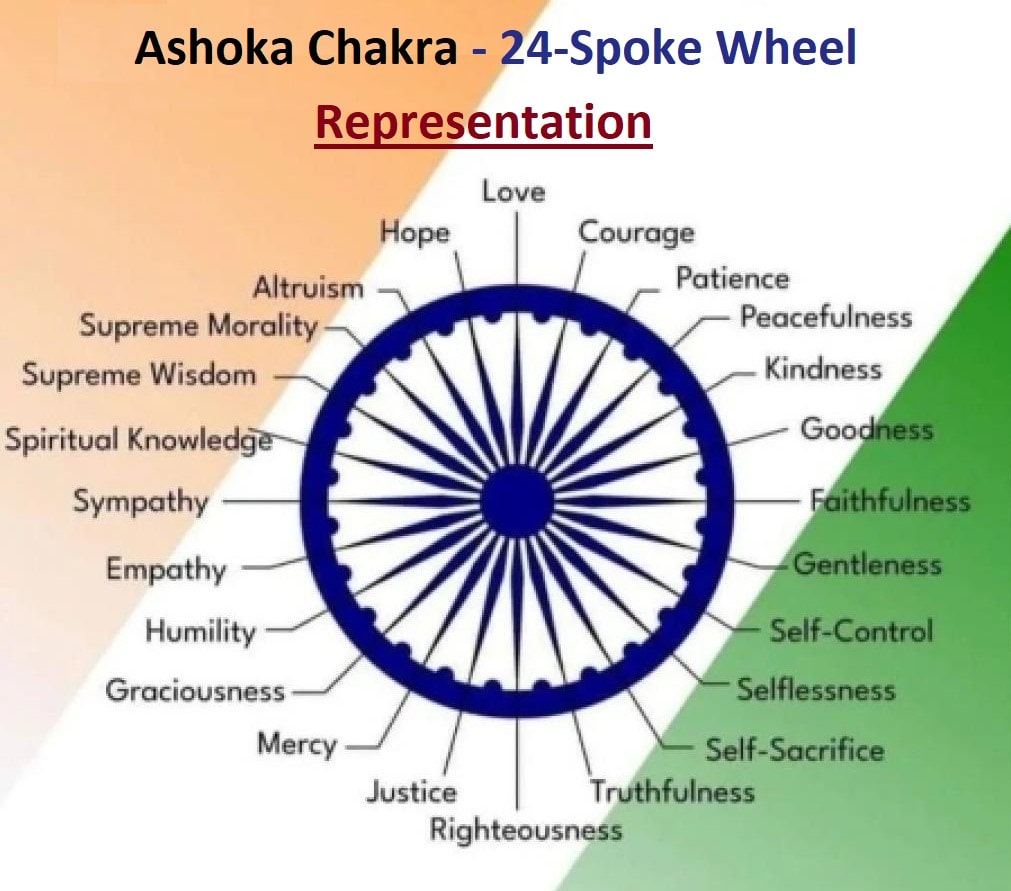
National Emblems of the Indian Flag
One of the most iconic elements of the Indian flag is the Ashoka Chakra, a symbol with deep historical roots and rich symbolism. Now, we will explore the significance and history of the Ashoka Chakra, providing insights into its 24 spokes and sharing fascinating facts about this emblem.
The Ashoka Chakra: Meaning and Symbolism
The Ashoka Chakra, a navy blue wheel with 24 spokes, is a vital part of the Indian flag’s design. It holds profound meaning and symbolism for the nation.
Historical Context
The Ashoka Chakra finds its origins in the Maurya Empire, particularly during the reign of Emperor Ashoka (c. 268-232 BCE). Emperor Ashoka was a pivotal figure in Indian history who embraced Buddhism and promoted nonviolence, justice, and moral values.
Understanding the 24 Spokes
The 24 spokes of the Ashoka Chakra have several interpretations and symbolize different aspects:
- Dharma: The 24 spokes represent the “Dharma” or righteousness that Ashoka sought to uphold. They signify his commitment to governing with ethics and fairness.
- Time: The 24 spokes also correspond to the 24 hours in a day, emphasizing the eternal nature of the dharma and the passage of time.
- Unity in Diversity: The 24 spokes symbolize the diverse paths to attain the ultimate truth or enlightenment, reflecting India’s cultural and religious diversity.
- Peace: The circular shape of the wheel represents the wheel of life and the cyclical nature of existence, reminding us of the importance of inner peace.
Attractive and Fascinating Facts About the Ashoka Chakra
- Buddhist Connection: The Ashoka Chakra is often associated with Buddhism, as Emperor Ashoka’s conversion to Buddhism had a profound influence on its symbolism.
- Influence on Indian Law: Ashoka’s edicts, which were inscribed on pillars and rocks, laid the foundation for India’s legal and ethical systems. The Ashoka Chakra continues to inspire principles of justice and moral values.
- Placement on the Flag: The Ashoka Chakra was added to the Indian flag’s white stripe to signify India’s commitment to justice, truth, and moral values.
- Spokes’ Significance: Each spoke of the Ashoka Chakra is evenly spaced and of equal size, emphasizing the importance of balance and equality in governance.
- National Emblem: The Ashoka Chakra also serves as the emblem of the Republic of India and can be found on Indian currency, government documents, and official seals.
Flag Hoisting Etiquette of the Indian Flag
Flag hoisting in India is a solemn and significant act, accompanied by a set of rules and traditions that reflect the country’s reverence for its national flag.
Hoisting the Indian Flag is not just a ceremonial act; it’s a symbol of respect, pride, and unity.
Hoisting the Indian flag is a proud and solemn moment for every Indian. It’s a symbol of our nation’s identity, unity, and sovereignty. However, there are specific rules and traditions governing the hoisting of the Indian flag that every citizen should be aware of. In this article, we will explore the flag hoisting etiquette, the importance of respecting the flag, and when and how to hoist it on special occasions.
Rules and Regulations
Hoisting the Indian flag is governed by a set of rules and regulations outlined in the Flag Code of India. Some key rules include:
- Correct Orientation: The flag should always be hoisted with the saffron stripe at the top and the green at the bottom.
- Respectful Hoisting: The flag should be hoisted briskly and lowered ceremoniously. It should never touch the ground.
- Half-Mast Position: When the flag is flown at half-mast, it should be first hoisted to the peak and then lowered to the half-mast position as a mark of respect.
- Hoisting Timing: The flag should ideally be hoisted at sunrise and lowered at sunset. If it’s left up overnight, it should be adequately illuminated.
National Holidays and Flag Hoisting
Flag hoisting is particularly significant on national holidays, including:
- Independence Day (August 15th): This day marks India’s independence from British rule in 1947.
- Republic Day (January 26th): Celebrating the adoption of the Indian Constitution in 1950.
- Martyrs’ Day (January 30th): Commemorating the assassination of Mahatma Gandhi.
Importance of Respecting the Flag
Respecting the flag is a mark of patriotism and unity. It symbolizes the sacrifices of those who fought for India’s freedom. Disrespecting the flag is not only a breach of protocol but also a disregard for the values it represents.
Flag Folding Traditions
In some traditions, the Indian flag is folded in a specific manner. The fold should resemble a triangle, symbolizing the shape of the Ashoka Chakra. Each fold represents different meanings, such as duty, faith, and righteousness.
Demystifying the Flag Code of India
The Flag Code of India, adopted in 2002, lays down the guidelines for the display and use of the national flag. It’s essential to familiarize oneself with this code to ensure the respectful handling of the flag.
Special Occasions Warranting Flag Hoisting
Apart from national holidays, there are various special occasions when flag hoisting is appropriate:
- State and local festivals: Many states and regions have their own festivals when flag hoisting is customary.
- Schools and colleges: Flag hoisting is a regular practice in educational institutions, instilling a sense of patriotism in students.
- Government and public buildings: Public offices and government buildings hoist the flag on designated occasions and events.
Flag Usage and Display of the Indian Flag
Where and When the Flag is Flown
- Public Places: The Indian flag is commonly flown in public places, including schools, colleges, and government offices, on national holidays and special occasions.
- Private Institutions: Many private institutions and businesses also hoist the flag on significant days to show their patriotic spirit.
- Residential Areas: In some neighborhoods, residents come together to fly the flag on designated days.
Half-Mast Flag and Its Significance
Hoisting the flag at half-mast is a solemn gesture of mourning and respect:
- National Mourning: The flag is flown at half-mast on days of national mourning, such as the passing of a prominent leader or a tragic event.
- Heightened Respect: It signifies a collective sense of grief and respect for the person or event being mourned.
Flag on Government Buildings
- Government Offices: Government buildings across India hoist the flag daily and lower it at sunset. The flag remains up even on weekends, symbolizing the continuity of governance.
- National Holidays: On national holidays, government buildings display the flag prominently, often accompanied by cultural programs and ceremonies.
Celebrations and Festivals
- Independence Day: August 15th is a significant day for flag display, with the Prime Minister hoisting the flag at the Red Fort in Delhi, followed by similar ceremonies across the nation.
- Republic Day: On January 26th, the Republic Day parade in Delhi features the flag prominently in a grand display of national pride.
- State Festivals: Various states in India celebrate their statehood with flag hoisting and cultural events.
Unique Flag Display Moments
- Sports Events: The Indian flag is displayed with pride during international sporting events when Indian athletes compete on a global stage.
- Space Missions: When Indian space missions achieve milestones, the flag is unfurled on the spacecraft, symbolizing India’s achievements in space exploration.
- National Emergencies: During times of national emergencies, the flag may be flown prominently as a symbol of unity and resilience.
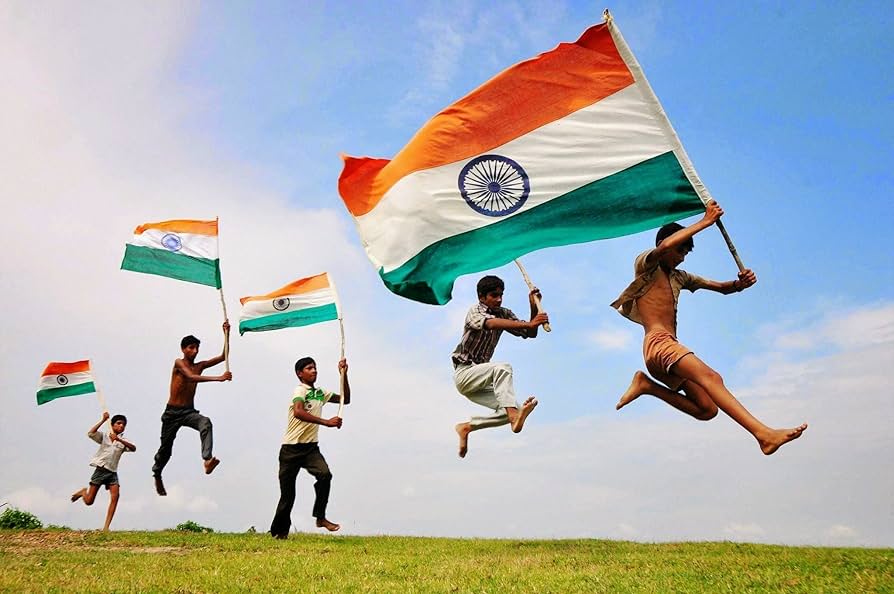
Flag Day Celebrations of the Indian Flag
Flag Day, a day of remembrance and solidarity, holds a special place in India’s calendar. Here, we explore the historical significance of Flag Day, its origins, how India marks this occasion, the contributions to charitable causes, and its modern-day observance.
Historical Significance of Flag Day
Flag Day in India commemorates the adoption of the national flag on July 22, 1947. It marks the historical moment when the tricolor, as we know it today, was officially chosen as the national flag. Understanding this historical significance deepens our appreciation for the occasion.
Origins and Significance of Flag Day
The idea of Flag Day originated as a tribute to the Indian armed forces. It serves as a reminder of the sacrifices made by soldiers to protect the nation’s sovereignty. Flag Day symbolizes solidarity with the armed forces and an opportunity for citizens to contribute to their welfare.
How India Marks Flag Day
Flag Day is observed with various events and activities across the country. The President of India and other dignitaries pay homage to the national flag at Amar Jawan Jyoti, India Gate, New Delhi. People wear small flags, and educational institutions organize special programs to educate students about the importance of the day.
Contributions to Charitable Causes on Flag Day
A unique aspect of Flag Day is the sale of small flags by the armed forces personnel and their families. The proceeds from these flag sales go towards the welfare of the armed forces and their families. It’s a noble initiative that allows citizens to contribute to charitable causes while showing support for the armed forces.
Modern-Day Observance
In today’s digital age, Flag Day observance has extended to social media platforms, where citizens express their gratitude towards the armed forces and share stories of valor. It has become a moment of national pride and unity.
The Making of the Indian Flag
The Indian flag, with its vibrant colors and deep symbolism, is not just a piece of fabric; it’s a representation of the nation’s identity and values. Now, we will explore the meticulous process behind the making of the Indian flag, including the materials used, the choice between handmade and machine-made flags, and the significant role of Khadi in flag production.
Materials Used
The Indian flag is made with great care and precision, using specific materials:
- Khadi Cotton: The main fabric used for the flag is Khadi, a handspun and handwoven cotton fabric. Khadi holds historical significance as it was promoted by Mahatma Gandhi during the freedom struggle, emphasizing self-reliance and rural employment.
- Dye: Natural or chemical dyes are used to achieve the three distinct colors: saffron, white, and green. These dyes are chosen for their colorfastness and resistance to fading.
- Ashoka Chakra: The Ashoka Chakra, which is a navy blue wheel with 24 spokes, is printed or embroidered onto the white stripe of the flag.
Handmade vs. Machine-made Flags
- Handmade Flags: Handmade flags are crafted by skilled artisans who meticulously weave the Khadi fabric and hand-paint or hand-embroider the Ashoka Chakra. These flags are considered to be of higher quality and are often used for ceremonial purposes.
- Machine-made Flags: Machine-made flags are produced using automated processes, which can result in flags that are more affordable and readily available for everyday use. However, they may lack the craftsmanship and authenticity of handmade flags.
Role of Khadi in Flag Production
Khadi plays a significant role in the making of the Indian flag:
- Symbol of Self-Reliance: The use of Khadi in flag production is a tribute to Mahatma Gandhi’s vision of self-reliance and economic empowerment for rural communities. It symbolizes the spirit of self-sufficiency that was central to India’s struggle for independence.
- Eco-Friendly Choice: Khadi is an eco-friendly fabric as it is handwoven and typically uses natural dyes. This supports India’s dedication to environmental sustainability.
- Cultural Significance: Khadi is deeply rooted in Indian culture and tradition. By using Khadi for the flag, India pays homage to its heritage and the values of simplicity and self-sufficiency.
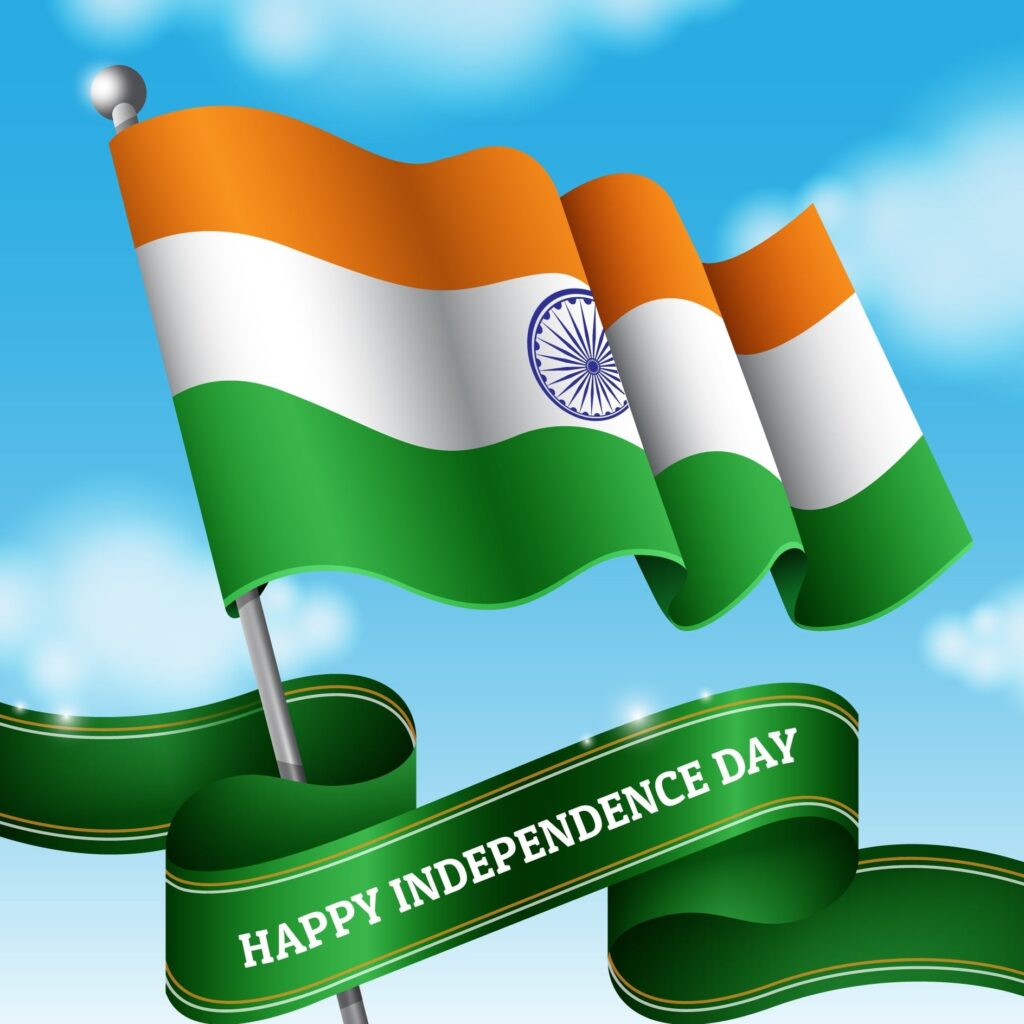
Famous Flag Moments of the Indian Flag:
The Indian Flag, with its vibrant tricolor and the Ashoka Chakra, has been a part of numerous iconic moments that fill our hearts with pride and patriotism. Let’s explore some of the most famous flag moments, from solemn flag-raising ceremonies to its presence at international events and joyous celebrations during festivals.
Flag-Raising Ceremonies
- Independence Day: Every year on August 15th, the Indian Flag is raised in a grand ceremony at the Red Fort in Delhi. The Prime Minister hoists the flag, and the nation observes this solemn occasion with great pride.
- Republic Day: January 26th marks Republic Day, and the flag-raising ceremony at Rajpath in New Delhi is a spectacular event. It showcases India’s military prowess, cultural diversity, and rich heritage.
- State Foundation Days: Each state in India has its own foundation day, and the flag-raising ceremonies during these events symbolize the state’s unique identity and history.
Flag at International Events
- Olympics: When Indian athletes participate in the Olympics, the Indian Flag proudly accompanies them. Seeing the flag being hoisted at these global sporting events fills Indians with a sense of unity and pride.
- UN Conferences: India is a participant in various United Nations conferences and summits. The flag represents the nation’s commitment to global cooperation and peace.
Celebrations and Festivals
- Independence Day Celebrations: Across India, Independence Day is celebrated with flag-hoisting ceremonies in schools, colleges, offices, and public places. It’s a day when citizens come together to honor their nation.
- Republic Day Parades: Republic Day parades in various cities feature the Indian Flag prominently. They showcase India’s diversity, culture, and military strength.
- Religious Festivals: During religious festivals like Diwali, Durga Puja, and Christmas, the Indian Flag is often displayed alongside festive decorations, emphasizing the spirit of unity in diversity.
Official Dimensions of The Indian Flag
The Indian Flag, with its vibrant tricolor and the Ashoka Chakra, is a symbol of national pride and identity. It’s important to understand the official dimensions of the flag to ensure it is represented with accuracy and respect.
The official dimensions of the Indian Flag are as follows:
- Width: The flag’s width is exactly 2/3 of its length. In other words, if you consider the length as ‘L,’ then the width would be ‘2L/3.’
- Length: The flag’s length is 1.5 times its width. If you consider the width as ‘W,’ then the length would be ‘1.5W.’
The Indian Flag, also known as the “Tiranga,” is a symbol of national pride and unity. To maintain its integrity and representation, it’s crucial to adhere to official dimensions. In this article, we will explore the official dimensions of the Indian Flag and provide a website link for reference.
Understanding the Importance of Official Dimensions
The Indian Flag’s design and proportions hold great significance. Adhering to the correct dimensions ensures that the flag is easily recognizable and reflects the nation’s identity accurately. Here are the official dimensions:
Hoist (Width): The width of the flag should be 1.5 times its height.
Fly (Length): The length of the flag should be twice its width (hoist).
Ashoka Chakra: The Ashoka Chakra’s diameter, including the Saffron color, should be three-fourths of the flag’s height.
Color Shades: The official colors of the flag are saffron, white, and green, with specific shades defined in the Flag Code of India.
Material: The Indian Flag should be made of Khadi, a hand-spun and hand-woven fabric, to pay homage to India’s freedom struggle.
By following the official dimensions and guidelines, we not only show respect for the Indian flag but also maintain its integrity as a powerful symbol of our nation’s unity, diversity, and heritage.
Color code of The Indian Flag
The Indian Flag, also known as the Tricolor, is a powerful symbol of India’s sovereignty and unity. Its vibrant colors represent the diversity and rich heritage of this culturally diverse nation. Now, we’ll delve into the color code of the Indian Flag and its significance.
1. Saffron (Bhagwa):
- Color Code: #FF9933
- Significance: Saffron represents courage and sacrifice. It embodies the spirit of selflessness and dedication to the country’s welfare. This color reminds us of the sacrifices made by countless individuals in India’s struggle for independence.
2. White (Safed):
- Color Code: #FFFFFF
- Significance: The white band symbolizes purity and truth. It signifies the path of righteousness and emphasizes the importance of maintaining honesty and integrity in all aspects of life.
3. Green (Hara):
- Color Code: #138808
- Significance: Green represents growth and prosperity. It signifies the rich natural resources and agricultural abundance of India. It also stands for faith and fertility, highlighting the importance of nurturing the nation’s future.
4. The Ashoka Chakra:
- Color Code: Navy Blue Circle
- Significance: The Ashoka Chakra, a navy blue wheel with 24 spokes, represents the eternal wheel of law. It reflects the principles of Dharma (righteousness) and duty. The 24 spokes signify the 24 hours of the day, emphasizing the need for vigilance and dedication to one’s responsibilities.
5. The Ratio:
- Proportions: The Indian Flag has a ratio of 2:3. This means that the width of the flag is twice its height. The Ashoka Chakra is centered in the white stripe, equidistant from the top and bottom edges.
Curiosities and Trivia of the Indian Flag
The Indian Flag, known as the “Tiranga,” is not just a symbol of India’s sovereignty and pride; it also holds fascinating stories and curiosities that often go unnoticed. Now, we’ll explore record-breaking feats, unusual incidents, and lesser-known stories associated with the Indian Flag.
Record-Breaking Feats with the Indian Flag:
- Largest Human Flag:
India made history on January 26, 2019, when 50,000 people gathered in Chennai to form the world’s largest human flag. This spectacular display of unity and patriotism captured global attention.
- Tallest Flagpole in India:
Noida, a city near Delhi, boasts the tallest flagpole in India, standing at an impressive 250 feet. The Tricolor that adorns this flagpole is an awe-inspiring sight and a testament to the nation’s pride.
Unusual and Remarkable Flag Incidents:
- The Flag That Flew in Space:
In a remarkable achievement, the Indian flag was carried to the moon by the Chandrayaan-2 mission in 2019. This unforgettable moment symbolized India’s space prowess and its commitment to exploration.
- The Flag on Everest:
In 1984, an Indian Army team achieved a remarkable feat by hoisting the Indian Flag on Mount Everest. This historic event showcased India’s determination and adventurous spirit.
Lesser-Known Stories Behind the Tricolor
- The Journey of the Flag’s Design:
The Indian Flag’s design, with its saffron, white, and green colors and the Ashoka Chakra, was adopted on July 22, 1947. However, the design process was initiated much earlier by Pingali Venkayya, an unsung hero who proposed the tricolor with a spinning wheel in the middle.
- The Influence of Mahatma Gandhi:
Mahatma Gandhi played a pivotal role in shaping the Indian Flag’s design. He insisted on the inclusion of the Ashoka Chakra, which is a symbol of peace and non-violence, reflecting his principles of truth and non-violence.
- The Khadi Connection:
Khadi is a handwoven and handspun fabric that is used to make the Indian flag. This choice reflects India’s commitment to promoting Khadi and supporting rural livelihoods.
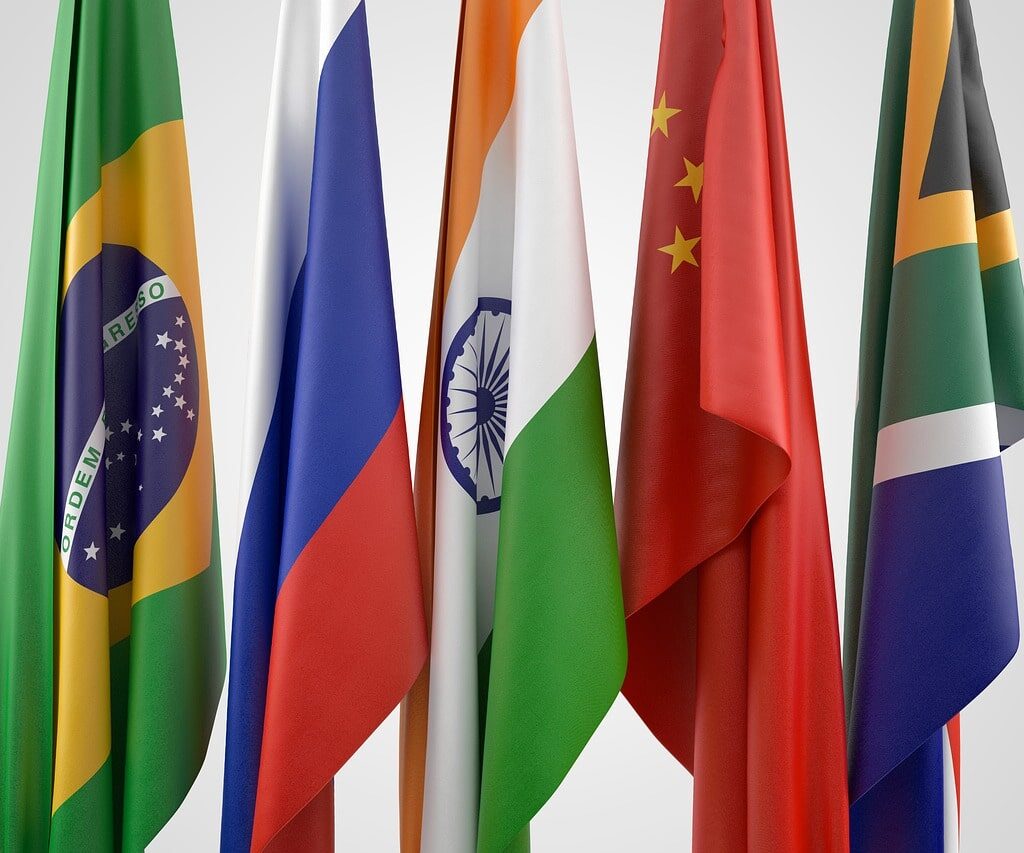
International Influence of the Indian Flag
The Indian national flag, known as the Tricolor, is not just a symbol of India’s sovereignty but also a source of inspiration worldwide.
Flags Worldwide Inspired by the Indian Tricolor:
The Indian Tricolor’s unique combination of saffron, white, and green, along with the Ashoka Chakra, has inspired other nations in designing their flags. Some notable examples include:
- Ivory Coast: The flag of Ivory Coast features vertical stripes of orange, white, and green, reminiscent of the Indian Tricolor.
- Niger: Niger’s flag, with its orange, white, and green horizontal bands, draws inspiration from India’s flag.
- Nigeria: The Nigerian flag also incorporates green and white, akin to India’s Tricolor.
- India’s Role in the International Flag Community:
India actively participates in international discussions and collaborations related to flag protocol, design, and usage. Some key aspects of India’s role include:
- Flag Protocol: India adheres to international flag protocols and etiquettes and is often consulted in matters related to flag usage and display.
- UNESCO Recognition: The Indian flag has been recognized as one of the “Flags of Honour” by UNESCO, signifying its cultural and historical significance.
- Contribution to International Flag Design: Indian vexillologists and designers have made valuable contributions to the field of flag design, influencing flags of other nations.
- The Global Recognition of the Indian Flag:
The Indian Tricolor enjoys recognition and respect on the global stage in various ways:
- International Sporting Events: Indian athletes proudly carry the Tricolor during international sports competitions, garnering global attention and admiration.
- International Diplomatic Relations: The Indian flag plays a vital role in international diplomacy, symbolizing India’s presence and engagement on the world stage.
- Symbol of Freedom and Democracy: The Indian flag’s colors and symbolism resonate with people worldwide as a symbol of freedom, democracy, and non-violence.
Flag Controversies and Amendments of the Indian Flag
The Indian flag, also known as the Tricolor, has a rich history and symbolism. However, it has not been without its share of controversies and amendments. Here, we delve into the intriguing world of flag-related controversies in India and the subsequent amendments that have shaped its present form.
- The Early Designs and Controversies:
In the early 20th century, several designs of the Indian flag were proposed, but it was not until 1947 that the current Tricolor was adopted. Here are some early controversies:
- The Red Flag Dispute: The use of red in the flag design was initially contentious, as some leaders felt it symbolized communism. Ultimately, the fiery saffron was chosen instead.
- The Inclusion of Religious Symbols: There were debates about including religious symbols on the flag. The decision was to keep it secular with the Ashoka Chakra at the center.
- Amendments Over the Years:
The Indian flag has undergone several amendments to address specific issues and ensure proper representation. These amendments include:
- Flag Size: The original flag’s proportions were 3:2. In 2002, the government standardized the flag’s size to 3:2, ensuring uniformity in manufacturing and display.
- Use in Non-Governmental Sectors: Initially, the use of the Tricolor was restricted in non-governmental sectors. However, in 2005, these restrictions were lifted, allowing more freedom for citizens to display the flag.
- Flag Code of India: The Flag Code of India was introduced in 2002, laying down detailed guidelines for the display and use of the national flag. This helped reduce misuse and disrespect.
- Controversies and Legal Battles:
Over the years, there have been instances where the flag was used inappropriately, leading to legal battles and debates. Some notable controversies include:
- Flag Burning Protests: Acts of burning the flag as a form of protest have sparked debates on freedom of expression versus respect for national symbols.
- Commercial Use: The commercial use of the flag on various products has often led to controversies, raising questions about commercializing national symbols.
- Flag on Clothing: The use of the Tricolor on clothing items has been a subject of legal disputes, with concerns about disrespect and appropriate use.
Conclusion
In our journey through the Indian Flag’s history, symbolism, controversies, and international influence, we’ve uncovered a tapestry of stories and insights that make this tricolor more than just a flag. As we conclude, let’s summarize the key takeaways and invite you to share your thoughts and insights.
Key Takeaways:
- Symbol of Unity and Pride:
The Indian Flag, with its saffron, white, and green colors, symbolizes the unity in diversity that is India’s strength. For every Indian, it is a great source of pride.
- Rich Symbolism:
Each color and element on the flag, including the Ashoka Chakra, carries deep symbolism, reflecting India’s history, values, and aspirations.
- International Influence:
The Indian Flag has inspired flags of other nations and plays a role in international flag-related discussions and protocols.
- Controversies and Amendments:
The flag has witnessed controversies related to its use and amendments to ensure its sanctity and relevance in changing times.
Share Your Thoughts:
We invite you to share your thoughts and insights about the Indian Flag:
- What does the Indian Flag mean to you personally?
- Have you witnessed any memorable flag-related events or celebrations?
- How do you think the flag can continue to inspire unity and pride in the future?
Your comments and perspectives are valuable in keeping the conversation alive and enriching our understanding of this iconic symbol.
Read More Articles on Flags – You May Like
FAQs: Indian Flag, Indian Tricolor, Indian Tiranga
- Who designed the Indian flag?
Answer: The final design of the Indian flag was adopted based on the ideas of Pingali Venkayya, a freedom fighter from Andhra Pradesh.
- Who made the Indian flag?
Answer: The Indian flag was made by a group of Indian women led by Surayya Tayyabji, who hand-stitched the first national flag of India in 1947.
- How many colors are there in the Indian flag?
Answer: The Indian flag consists of three colors: saffron at the top, white in the middle, and green at the bottom.
- Which part of the Indian flag symbolizes strength and courage?
Answer: The saffron color at the top of the Indian flag symbolizes strength and courage.
- What does the green part of the Indian flag symbolize?
Answer: The green color at the bottom of the Indian flag symbolizes growth, fertility, and the agricultural prosperity of India.
- Why are there 24 spokes in the Ashoka Chakra on the Indian flag?
Answer: The 24 spokes in the Ashoka Chakra on the Indian flag represent the principles of righteousness (dharma) and progress (vikrama) as espoused by Emperor Ashoka, after whom the Chakra is named.
- Who invented the Indian flag?
Answer: The Indian flag’s design was not invented by a single person but was based on the ideas and contributions of several freedom fighters and leaders, with Pingali Venkayya playing a significant role.
- What does the white color in the Indian flag mean?
Answer: The white color in the Indian flag represents peace, truth, and purity.
- How to fold the Indian flag?
Answer: Folding the Indian flag should be done carefully and respectfully. Here is a simplified guide:
a. Lay the flag flat with the saffron side on top.
b. Fold it in half horizontally, bringing the bottom green portion over the white.
c. Fold it in half horizontally again to form a rectangle with the saffron on top.
d. Begin folding from the striped end to form a triangular shape, continuing until only a triangle
of the saffron field is visible.
e. The folded flag should resemble a triangle with only the saffron and part of the Ashoka
Chakra visible.
10. What is the Indian Flag called?
Answer: The Indian Flag is called the “Tiranga,” which means tricolor in Hindi.
- What does the term “Tiranga” mean in relation to the Indian flag?
Answer: “Tiranga” is a Hindi word meaning “tricolor,” referring to the three colors of the Indian flag
- What are the colors of the Indian Flag?
Answer: The Indian Flag consists of three colors: saffron at the top, white in the middle, and green at the bottom.
- What does the saffron color in the Indian Flag symbolize?
Answer: Saffron symbolizes courage and sacrifice.
- What does the white color in the Indian Flag represent?
Answer: White represents peace, truth, and purity.
- What does the green color in the Indian Flag signify?
Answer: Green symbolizes growth, fertility, and the agricultural prosperity of India.
- What is the Ashoka Chakra on the Indian Flag?
Answer: The Ashoka Chakra is a navy-blue wheel with 24 spokes and represents righteousness and progress.
- When was the current design of the Indian Flag adopted?
Answer: The current design of the Indian Flag was adopted on July 22, 1947.
18. When is National Flag Adoption Day celebrated in India?
Answer: National Flag Adoption Day is celebrated on July 22nd each year to commemorate the adoption of the Indian flag’s current design.
- Why was the Ashoka Chakra added to the Indian Flag?
Answer: The Ashoka Chakra was added to represent India’s commitment to justice and progress.
- What is the significance of the Indian Flag’s design?
Answer: The Indian Flag’s design reflects India’s rich history, diversity, and its commitment to peace and progress.
- What is the Flag Code of India?
Answer: The Flag Code of India is a set of guidelines that govern the proper display and use of the Indian Flag.
- What are the rules for hoisting the Indian Flag?
Answer: The Indian Flag should not touch the ground, and it should always be hoisted with the saffron color on top.
- What are the dimensions of the Indian flag?
Answer: The Indian flag’s proportions should be in the ratio of 2:3, and the length should be 1.5 times its width.
- Has the Indian Flag been in space?
Answer: Yes, the Indian Flag was carried to the moon by the Chandrayaan-2 mission in 2019.
- What is the tallest flagpole in India?
Answer: The tallest flagpole in India stands at 250 feet and is located in Noida, near Delhi.
- When was the Flag Code of India introduced?
Answer: The Flag Code of India was introduced in 2002.
- How has the Indian Flag’s design changed over the years?
Answer: The design has seen minor changes in the shades of saffron and green to enhance visual appeal.
- What is India’s role in the international flag community?
Answer: India actively participates in international flag conferences and promotes flag-related protocols and standards.
- When was the Ashoka Chakra added to the Indian Flag?
Answer: The Ashoka Chakra was added to the Indian Flag in 1947.
- Why is the Indian Flag an important national symbol?
Answer: The Indian Flag represents India’s unity, diversity, and commitment to peace, making it a symbol of immense national pride.
